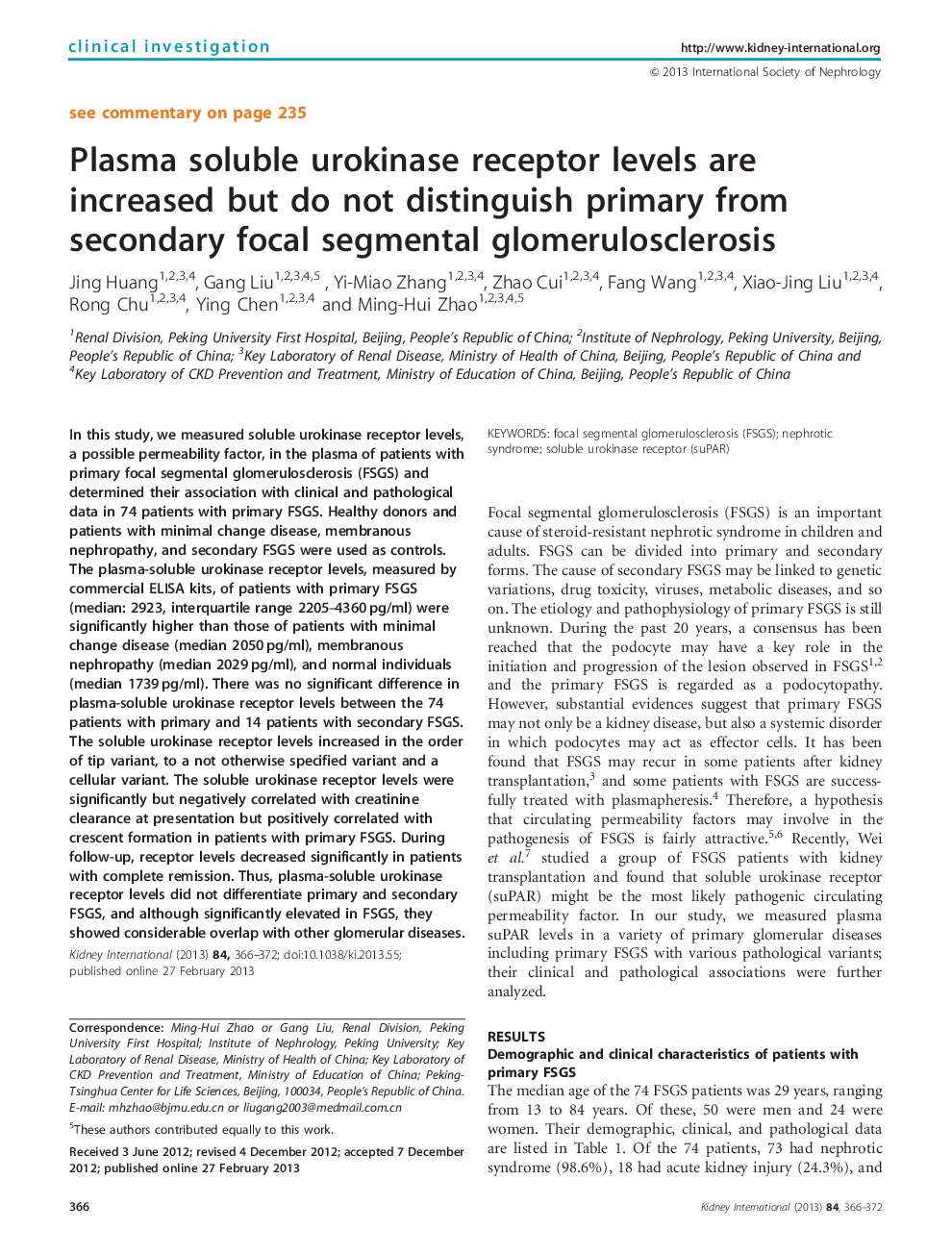| Article ID | Journal | Published Year | Pages | File Type |
|---|---|---|---|---|
| 6162709 | Kidney International | 2013 | 7 Pages |
Abstract
In this study, we measured soluble urokinase receptor levels, a possible permeability factor, in the plasma of patients with primary focal segmental glomerulosclerosis (FSGS) and determined their association with clinical and pathological data in 74 patients with primary FSGS. Healthy donors and patients with minimal change disease, membranous nephropathy, and secondary FSGS were used as controls. The plasma-soluble urokinase receptor levels, measured by commercial ELISA kits, of patients with primary FSGS (median: 2923, interquartile range 2205-4360Â pg/ml) were significantly higher than those of patients with minimal change disease (median 2050Â pg/ml), membranous nephropathy (median 2029Â pg/ml), and normal individuals (median 1739Â pg/ml). There was no significant difference in plasma-soluble urokinase receptor levels between the 74 patients with primary and 14 patients with secondary FSGS. The soluble urokinase receptor levels increased in the order of tip variant, to a not otherwise specified variant and a cellular variant. The soluble urokinase receptor levels were significantly but negatively correlated with creatinine clearance at presentation but positively correlated with crescent formation in patients with primary FSGS. During follow-up, receptor levels decreased significantly in patients with complete remission. Thus, plasma-soluble urokinase receptor levels did not differentiate primary and secondary FSGS, and although significantly elevated in FSGS, they showed considerable overlap with other glomerular diseases.
Related Topics
Health Sciences
Medicine and Dentistry
Nephrology
Authors
Jing Huang, Gang Liu, Yi-Miao Zhang, Zhao Cui, Fang Wang, Xiao-Jing Liu, Rong Chu, Ying Chen, Ming-Hui Zhao,
